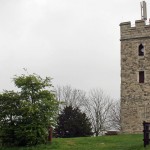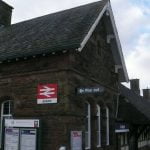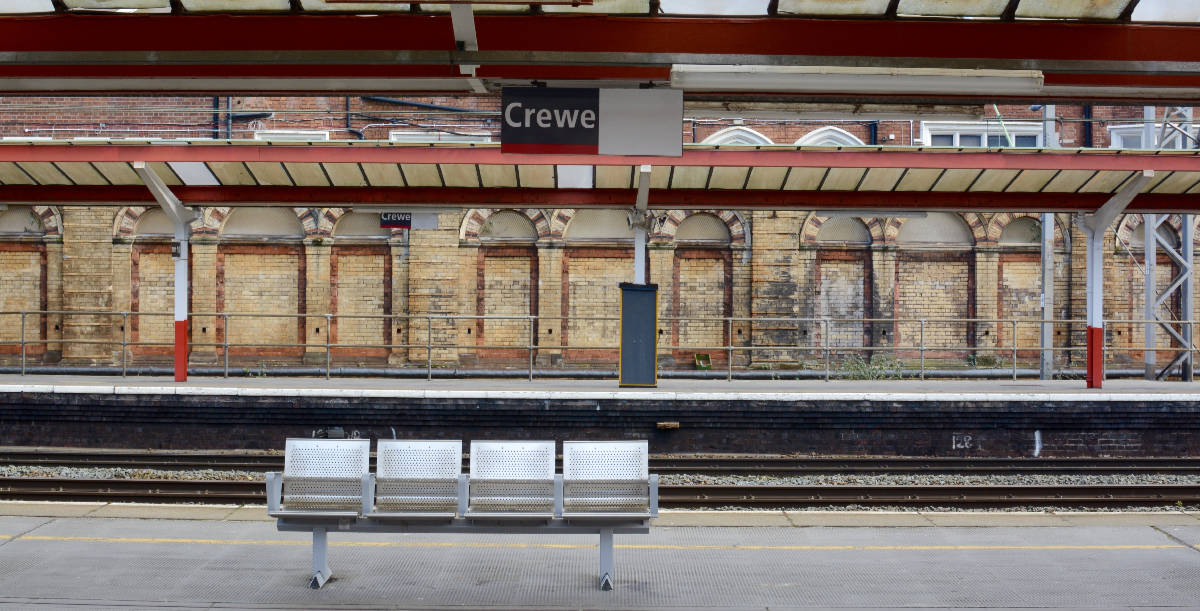
Crewe, in Cheshire, home to one of the Worlds most significant Railway station and in fact is one of few towns originally built expressly to accommodate railway workers. These navvies as they were known then were fundamental in the construction of Britain’s Rail Network. Add to this the fact that Rolls Royce Cars were built here from 1946 to 2002 and they have a Football team which has produced its fair share of international footballers and you have a town worth knowing a bit more about.
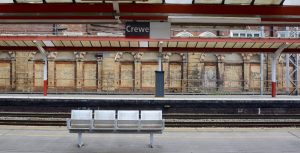
Image: tornadoflight/Shutterstock.com
So hang around as we are talking all things, Crewe, today and by the time we are finished, you will want to visit or perhaps even move here. We’ll cover a little history and then move on to the attractions. Don’t panic though we will try and keep it light. So without further ado here we go…
The History of Crewe
The land Crewe sits on has been inhabited for many years… even if the town wasn’t there yet. It sits on part of the town of Monks Coppenhall, which was part of a parish of the same name. Although it was sparsely populated, the people there could attend church in nearby Church Coppenhall. Although we couldn’t find any evidence of archaeological digs in the area, we did manage to trace the town in the Domesday Survey.
The Domesday Book was written in 1086 and forms the first complete picture of the lands of England. Each landowner was registered, alongside what they owned and how much it made them. This allowed King William to take account of his taxes. Everyone who was anyone in 1086 is in this book… including Church Coppenhall.
At the time of the survey (1086) Church Coppenhall had 5 recorded households. The land belonged to William Malbank, and sported 4 ploughlands, 2 plough teams, and one villager. It had 1 smallholder, 1 rider, and a few other facilities. This put it at smaller than a village and occupying three fields and one league of woodland. It is interesting to look back through time and see how the town has changed.
Interestingly, there is also an entry for Crewe itself, even though it was part of another area. The land wasn’t even a village. There was one villager, two smallholders, and a single rider to share three ploughlands. The land was worth about 5 shillings a year.
The Birth of Crewe
Where normal towns had to have railways, stations added in to deal with demand and population, Crewe was a railways station first. Rather, it was a railway junction that sat just outside of Coppenhall. The Grand Junction Railway Company were first to build a railway on the site. It was shortly followed by a yard for fixing locomotives, as well as a huge junction. The town wasn’t even a town back then, it was a small village of no more than 70 people.
The railways were built en mass after 1841 and, by 1843, the junction that all railways passed through had become so large that it needed its own town. Crewe was named after the railway station and planned out by civil engineer Joseph Locke. It was built expressly to house the railway builders… Crew is most definitely a railway town. A school was built in 1842, and Christ Church was added in 1845.
Now A Parish
You can still see remnants of this train-station like architecture in the town’s council buildings. They have that familiar raised bell and clock tower found in most train stations in England. Crewe eventually became its own civil Parish and had to be named Crewe Green to distinguish it from the town. The town itself was officially made a parish in 1877, some 35 years after it was first put together and a few hundred years after the area was first settled.
In 1854 a cheese market was opened in the train station. Where else would you put your cheese shop? In 1866, a fire broke out in Crewe Hall, destroying it almost completely. 1871 saw a cemetery added with 1877 seeing the Crewe Urban Sanitary District was set up. This was a team of people who could hire street cleaners, ensure the town was paved and well lit. They worked right up until the end of the century to turn Crewe into a desirable place to live.
In 1877, the football club was founded. They are known as Crewe Alexandra and would eventually become one of the founding members of the Football League Division 2. By the turn of the century, they had a population of nearly 30,000 people… not bad for a town a little over fifty years old.
Let’s pause in the history of Crewe for a moment to learn some trivia. If you want to impress your new neighbours at parties, here are some fabulous Crewe facts for you…
Interesting Facts about Crewe!
What are the Five Minutes Spare fun favourite fun facts about Crewe? Read on and find out…
- There are words exclusive to Crewe… ‘the Razza’ is the area behind the old Youth Centre, giving someone a Croggie – a free ride on your bike’s handlebars, and more!
- CW1 is considered the postcode of ‘the scally’… although we’re not sure what that is.
- Crewe Railway Station is regarded as one of the world’s most important railway centres, however, it was not incorporated into the then Borough of Crewe until 1937
- In 1877, the football club was founded as a subdivision of Crewe Alexandra Cricket Club! Given the weather, they probably wanted something to do in the winter.
- The club’s suffix was in honour of Princess Alexandra of Denmark, then Princess of Wales Queen’s Park was built by yet another railway engineer. They would eventually become one of the founding members of the Football League Division 2.
- By the turn of the century, they had a population of nearly 30,000 people… not bad for a town a little over fifty years old.
Crewe is an interesting place to live, particularly if you like a good train. Be wary of buying a house near all those tracks though… it’s hard to sleep with the train noises until you get used to it.
Anything else to know about Crewe?
Well, they made Rolls Royce cars here from 1946 to 2002 and railway engineering is still a major employer in the town.
Crewe is twinned with Mâcon in France, Bischofsheim in Germany & Dzierżoniów in Poland.
Ok, let’s get back to the history. We were already at the beginning of the 1900s, so there’s not that much left to recite.
Crewe in the 20th Century
There’s an old riddle about Crewe, the town of, because it was not the real Crewe. We’re not sure about the logistics of it all, but there’s the riddle:
“The place which is Crewe is not Crewe, and the place that is not Crewe is Crewe.”
It was to do with the municipal borough and the train station. Whatever you want to call it, up until 1897 it had a school, a company doctor, a non-conformist minister and its own church. They built a gas firm, then piped in water, all at the end of the century. There was a clothing factory in the area to be able to clothe those workers, and a printing works was added during this industrious time.
Unlike other towns of the time, Crewe flourished early in the Industrial era, then began to mellow out. By 1901 the population had leapt to 42, 000, and it added a further 10k over the next decade. Back then, it was sizable. Around ten thousand residents worked for the railway, right through until the First World War. Even after hundreds of young men from the area went off to fight, and even though the importance of the railway has faded over time, it is thought that around 2,000 Crewe residents still work for the railway to this very day.
In 1905 the municipal buildings were designed and opened, and they looked nothing like a train station at all… The Lyceum Theatre was updated in 1911 with three new churches added before 1912.
The Mail Arrives
The sorting office in Crewe was added just before the First World War and cost £16,000. In those days, that was more money than you would make in a lifetime.
The consequences of adding that sorting office were marvellous. An estimated 40,000 mail bags were shipped out of here, every single day – by train, of course.
Two World Wars in Crewe
WWI descended on Crewe as it did any other town. Since it was already outfitted for railway works, the town would see the transport of all manner of munitions and industrial goods. At the start of the war, there were between 7 and 8 thousand young men working for the railway. Of course, many of these were forced to either join up or be presented with the white feather.
The Roll of Honour in Crewe records the deaths of 587 soldiers from Crewe. In a haunting tribute, some of them have photographs attached on the webpage. Somehow, it makes it all more real. In Britain at that time, the government encouraged people to join up for war with all their friends, then compounded the mistake by putting all the friends from one area in the same regiment. This meant that, in the trenches, you were reduced to sending batches of men from the same town over the lines to die together. This amounted to larger losses than the UK government had seen before.
World War Two Crewe
By WW2 they had learned their lesson somewhat. Therefore, you are moved elsewhere if you sign up for the army even to this day. Crewe became an important manufacturing town in WWII. The railway and the Rolls Royce factories, newly established, combined to make it a great place for industrial output. One witness describes how she didn’t go to school from being four until she turned 6. When she did return to school, it was after the building had been bombed. As such, she had school in a makeshift tin building, the likes of which the prefab houses were built with.
WWII saw around 40 oil drums lit and allowed to burn just outside of town. Where they were placed would change depending on wind direction. They were lit and burned most full moons. This served as a smokescreen so that the Germans couldn’t see the Rolls Royce factory, which was engaged in churning out military equipment and munitions. We also know that the old clothing factory was requisitioned to make greatcoats for soldiers. The greatcoat would act as their sleeping bag, as well as being thick enough wool to keep them safe from the worst of the rain. It is noted that London evacuees did make it this far north, to be taken in by the good residents of Cheshire.
Post-World War II
Some of Crewe needed to be rebuilt after the war. They had been on the flight path to Liverpool for the Germans and had therefor been mistakenly bombed more than once. Rolls Royce remained the employers of choice after the railway’s importance started to die down. They were hiring and firing up until the early 2000s. Even after they closed, the Bentley car factory took over business on Pym’s Lane. Locomotive services are still big in the area, with firms still employing around 10,000 people between them. Crewe Gates Industrial Estate sprang up to encompass the areas of industry in town, but the 60s right through to the present as seen the new focus on retail and entertainment complexes.
What’s next for Crewe? We expect the 2021 holiday season will see some staycation tourists in the area – especially if they like trains. We are hoping that this results in more money being poured into the area so that the refurbishment of the town centre that’s been in the planning for the last 2 decades can finally be accomplished. It’s a great town with a greater heritage. To let something like this slide would be criminal.
Nowadays, the town population is around 71k.
Now that we have covered the history, let’s turn our attention to the other perks of Crewe… which celebs might you meet there and what are the best things to do in town?
Famous People from Crewe
There has been a dazzling array of famous people from Crewe over the years. We’re not going to lie, most of them are railway engineers, architects, and football stars from about a hundred years ago. We did drum up a few modern stars though. Here are the Five Minutes Spare favourite celebrities from Crewe:
- Children’s author Carl Ashmore is from here, s is novelist William Cooper.
- William Hope – who is a historical figure that took spirit photography and duped a bunch of people here back in the early 1900s.
- Steve Jones, the TV presenter (not the Welsh one, the other one) is a Crewe man.
- Fashion designer William Tempest is Crewe born.
- Athlete (the band) member Carey Willetts is from here, too.
Alongside a variety of cricketers and footballers, Crewe has a lengthy list of celebs for a town of its size. One can’t help but tip the hat in admiration. Now that we have covered famous names from Crewe, we can turn our attention to the best things to see and down if you happen to be in Crewe for a holiday.
Top Attractions of Crewe
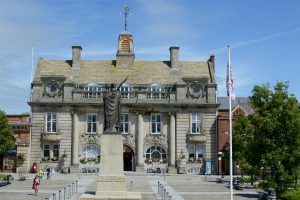
Image: tornadoflight/Shutterstock.com
Thus, we arrive at the part we have all been waiting for – the top attractions. If you are looking for somewhere to go on your next holiday at home, these are the places you need to take note of…
Historic Sites and Landmarks
Although technically a theatre and therefore an entertainment venue, the Lyceum Theatre is also a historic sight and a local landmark. Refurbished a few times since the 1911 refurb that saved it from demolition, this is the first attraction in town that you will notice. As well as taking up a whole lot of space in the town centre, it also runs some decent shows. If you are stuck for something to do in town, this is your best place for a good night out.
The Bentley Motor Factory, although one of the weirder landmarks we have reviewed, is exactly that. You can take a tour, which is nice. This is the factory that originally housed Rolls Royce, so it has a lot of history behind it. If you like cars you should knock yourself out here.
Trainspotters will enjoy the trip out to the Exeter West Signal Box. This place is as elegant now as it was when it was built away back in the 1800s. It’s just a signal box, but those with a railway passion will love it.
Museums and Galleries
The Crewe Heritage Centre is a must-see for all your trainspotters and track lovers out there. It documents the rise of the train station, the junction, and the town, all in one convenient place. You can learn a lot about the industrial era here, as well as getting to go inside some of the older train models that don’t run anymore.
Those who enjoy the peace and serenity of religion might also enjoy a trip over to the Englesea Brook Chapel and Museum. This little speciality museum covers primitive methodism, which is quite a niche subject for a small-town chapel in England. Check it out and give freely since it is run by volunteers.
If you are a fine art fan, go down to the Little Cheshire Gallery in Nantwich for a look. It has some lovely pieces by local artists that you can invest in.
Shopping and Retail
Arguably the best shops in town are all housed either in the town centre, or in the Grand Junction Retail Park. You also have the Market shopping centre if you are hungry for shops.
Sports and Recreation
Football lovers can stop by Alexandra Stadium to see the local football team. You can have a stadium tour, catch a match if they are playing, or even just marvel at the size of it from outside. Locals tend to refer to the stadium as Gretsy Road, so don’t be confused.
You have the choice between the Queen’s Park Golf Course and the Crewe Golf Club if you want a little golfing on your holiday. As for Rugby, you are looking for the Crewe and Nantwich RFC.
Outdoor Attractions
One of the most central places locals love to go in summer is Queen’s Park. This is one of the old green spaces planned into the build of the town, integrated by the engineer all those years ago. It is part boating pond, part picnic destination. Keep an eye on the little ones around the water.
Second on the list of excellent outdoor attractions in Crewe is the farm park just outside of town. Lakemore Farm Park has a mini golf course for all you golf lovers, includes and outdoor play and activity centre, and has lots of animals to feed and pet in their mini zoo. Parents vote this as one of the best things to do in Crewe with kids.
Other Notable Attractions
There are so many things to do in Crewe that we couldn’t manage to list them all in great detail. However, if you are in town, have checked out all the above, and still want more, visit these places:
- They have an Odeon, although we’re not sure if the cinemas will ever open up again after Covid-19.
- Take the kids to Funsters Play and Party Centre if you want to celebrate a birthday.
- The Crewe Lifestyle Centre is a great place to get to the gym if you want a workout.
- Visit the Burma Star Island Memorial or the War Memorial to pay your respects.
- The Axis Arts Centre run regular youth projects. Keep an eye and see what’s on during your visit.
How to get to Crewe?
Now you know everything we do about Crewe, except how to get there. Follow these incredibly loose directions and you are sure to be less lost.
By Road
If you follow the M6 too Barthomley Junction and head west on the A500, you will reach Crewe.
By Rail
Crewe Railway Station is the major interchanfge on the West Coast Line. If you are travelling North or South the chances are you will pass through Crewe.
By Air
The nearest airport is Manchester.
By Sea
There is no sea access although the River Waldron runs nearby if you sail.
Five Minutes Spare
Here at Five Minutes Spare, we take great pride in documenting the great attractions of Great Britain. If you love your country and want to explore it, you should browse through our travel pages. You can visit our HQ by following this link.

